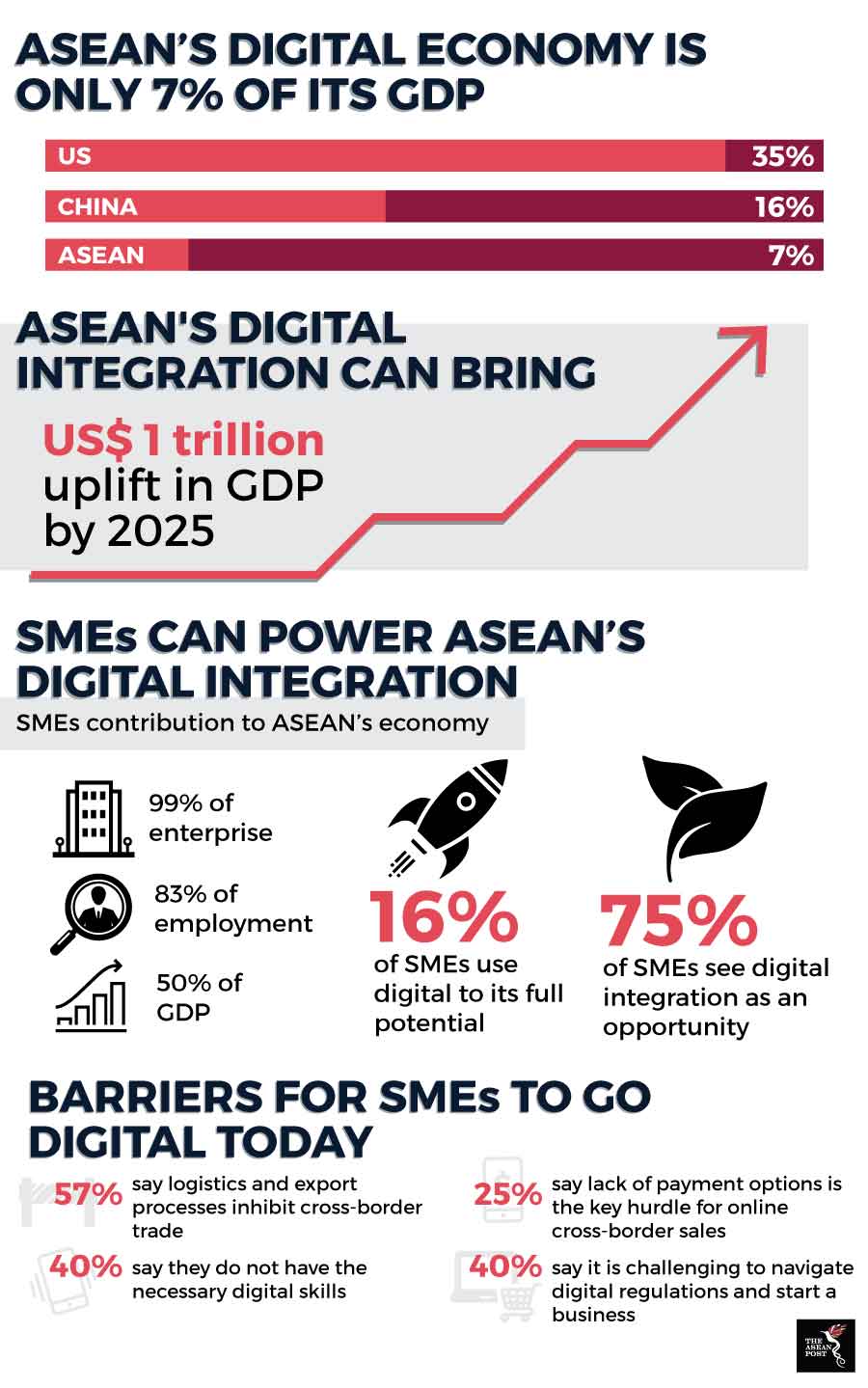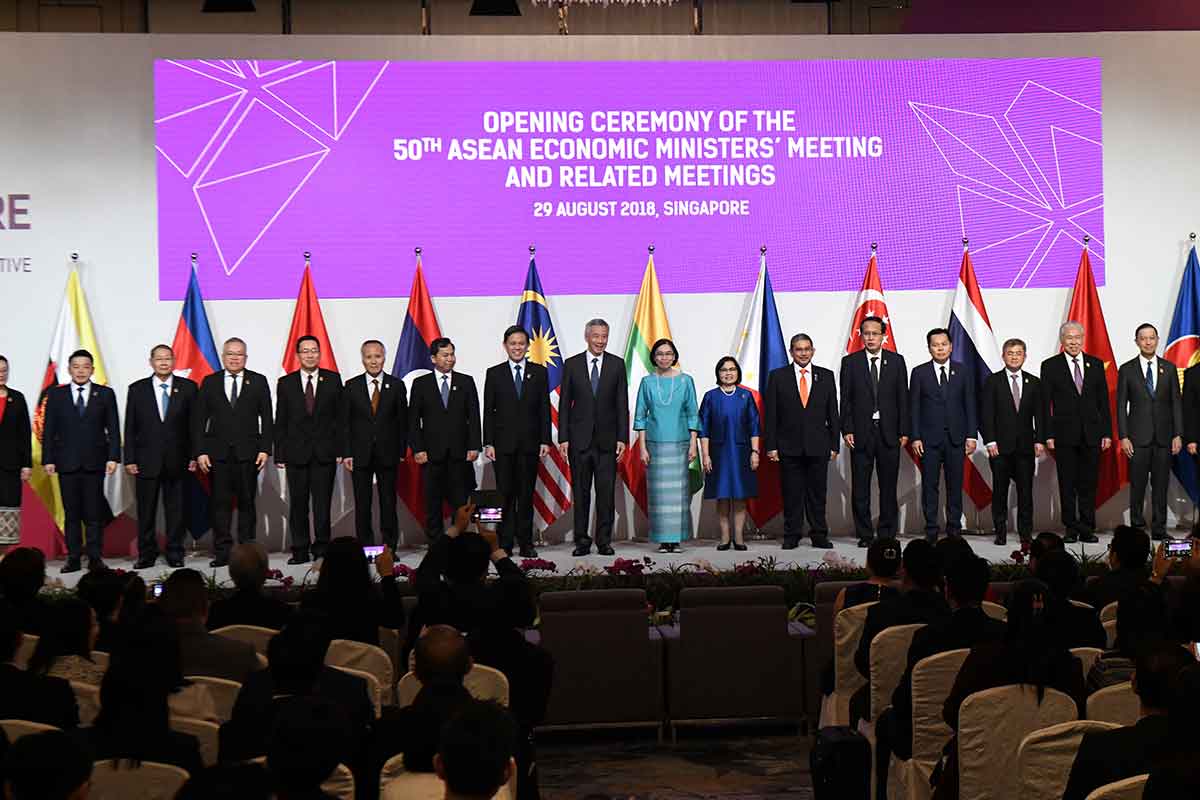Collectively, the Association of Southeast Asian Nations (ASEAN) is ranked third in terms of population, sixth in gross domestic product (GDP) and fourth in trade value. In the recently concluded ASEAN Economic Ministers’ (AEM) Meeting, it was announced that the combined GDP of the association reached US$2.8 trillion in 2017, a 5.3 percent growth year-on-year, up from 4.8 percent in 2016.
Growth is expected to remain stable at around 5.2 percent in 2018 and 2019. However, in order to reach this number or even exceed it, ASEAN must embrace the digital revolution which has thus far taken the world by storm. ASEAN’s digital economy is only seven percent of its current GDP. Comparatively, the region’s neighbour China is at 16 percent while the United States (US) is at 35 percent.
A recent report by Bain & Company, a global management consultancy, highlighted the importance of small and medium enterprises (SMEs) as “critical for expanding digital integration.” Subsequently, it would enable them to become formidable regional and global players. According to Bain & Company’s estimate, digital integration by SMEs could boost ASEAN’s combined economy by US$1 trillion before 2025.
SMEs contribute to more than 50 percent of ASEAN’s GDP, employ more than 80 percent of the region’s workforce and represent 99 percent of enterprises in key sectors. However, on average, SMEs only contribute to just 20 percent of their country’s export value.
The report which polled 2,342 ASEAN SMEs revealed that currently 75 percent of SMEs see digital integration as an opportunity, but only 16 percent truly utilise digital tools. Among those that do, more than 95 percent export their products elsewhere.
Overcoming barriers
SMEs largely face issues pertaining to access to digital tools where 50 percent of them claim that the high cost of such tools impeded their business’ digital progress. Besides that, broadband coverage is also an important factor especially for rural SMEs which have limited access to high quality and high-speed broadband.
Moreover, about 45 percent of SMEs remain in the dark with regards to their understanding of digital technology while more than 40 percent see gaps within the workforce in terms of digital skills. 40 percent of those surveyed also cited barriers to navigating tricky digital regulations and starting a business.

Source: Bain & Company
On top of that, SMEs also lack engagement in cross border trade. More than 50 percent of SMEs see cross-border trade processes and logistics infrastructure including data localisation requirements as key barriers to selling abroad digitally. About 25 percent of SMEs need more seamless cross-border payment options to sell online overseas.
To solve these issues, countries in the region need to rely on an ASEAN-wide framework to promote digital integration. The focus must be on improving digital connectivity, facilitating commerce and trade, building a resilient digital and business ecosystem as well as transforming the workforce to be more digitally adept.
Regional trade deal
SMEs must also eschew a more regional and global outlook as opposed to being confined to their own localities.
To that end, the Regional Comprehensive Economic Partnership (RCEP), a free trade deal encompassing the ASEAN-10 as well as China, India, South Korea, Japan, Australia and New Zealand could work immensely to the advantage of SMEs in the region. It is already in its final phases of completion and a broad agreement could be signed this November.
The biggest advantage for SMEs if the trade agreement follows through is market access. Trade financing would enable SMEs to easily export their products. As they grow larger, their inclusion in global supply chains would help them better realise economies of scale. Moreover, with technical cooperation with other more advanced industrialised nations like Japan, South Korea, New Zealand and Australia, SMEs elsewhere would be able to develop better, more competitive products.
This would also have a knock-on effect on the labour market. The Asian Development Bank (ADB) estimates that a 10 percent increase in trade finance globally could boost employment by one percent. As SMEs grow and expand their businesses thanks to the RCEP, they can also create more job opportunities that would drive unemployment rates down.
With greater market access and proper digital integration, the world is certainly a Southeast Asian SME’s oyster.
Related stories
Strengthening ASEAN’s labour force
